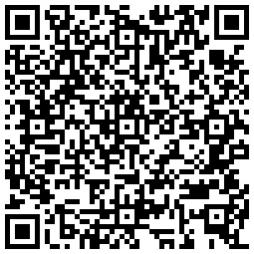QR codes have been in the news recently, bringing news stories, animated zoo animals, and nurtrition facts from tiny barcodes to the screens of mobile phones worldwide. By linking print media with mobile phones, the codes are helping to bridge the connection between old and new media and have impliations for social mobile campaigns.
A QR -- or Quick Response -- code is a two dimensional bar code that can be used for tracking or link to information such as a website or text message. When a user scans the code with a camera phone the code then links to the destination URL or other information. The codes were first created by a Japanese corporation in 1994 for tracking parts used in car manufacturing, but today are found in everything from newspapers to business cards to advertisements. QR codes can hold several hundred times more information than conventional bar codes.
QR codes are widely used in Japan, currently used for everything from providing insurance quotes from a magazine ad to viewing movie trailers from billboards. McDonald's customers in Japan can even access nutritional information from a hamburger by aiming their mobile phone at the wrapper.
However, QR codes are just beginning to be used in the rest of the world. Welt Kompakt, a German newspaper, uses QR codes daily to take readers from print articles to websites. This video (it's in German) shows how it works. The codes, printed in the newspaper, link readers to outside resources or the web.
The Wellington Zoo in New Zealand has used QR codes for advertising purposes with an "augmented reality" program that allows users to view 3D images of animals on mobile phones. Advertisements, which ran in national newspapers, allowed people with Nokia camera phones to download an application via a shortcode. After downloading the application, users could hover their mobile above a QR code, which then showed a 3D animal on their phone. Holding the phone at different angles would move or rotate the animals.
The campaign was successful, actually bringing in a 32% growth in visitors during the weeks that the ads were in newspapers. For a demonstration, check out this video, which calls the campaign "a world first in advertising."
What are the implications of these tiny barcodes for NGOs? Could non-profits use QR codes in similar ways to already existing commerical uses?
QR codes could be used in all kinds of ways, from fundraising to presenting information to signing up constituents for a mobile campaign. A mobile phone user might see a QR code on an advertisement and instantly make a donation to a cause. A QR code could also allow a user to get "just-in-time" information -- on health or environmental impact, for example -- onto their mobile phones. NGOs could use QR tools as a recruitment tool, allowing users to sign up for a mobile campaign by pointing their phone at the code.
Current technological limitations on QR codes certainly exist. A user must have the appropriate QR code reader on their phone and the phone camera must be able to photograph the code in appropriate detail. A code on a poster, for example, would require a camera with good zooming capabilities. However, as technology improves, and more phones come equipped with QR code applications, we'll likely be seeing a lot more of these tiny codes in the future.
Photo credit to Kolya.


Post new comment